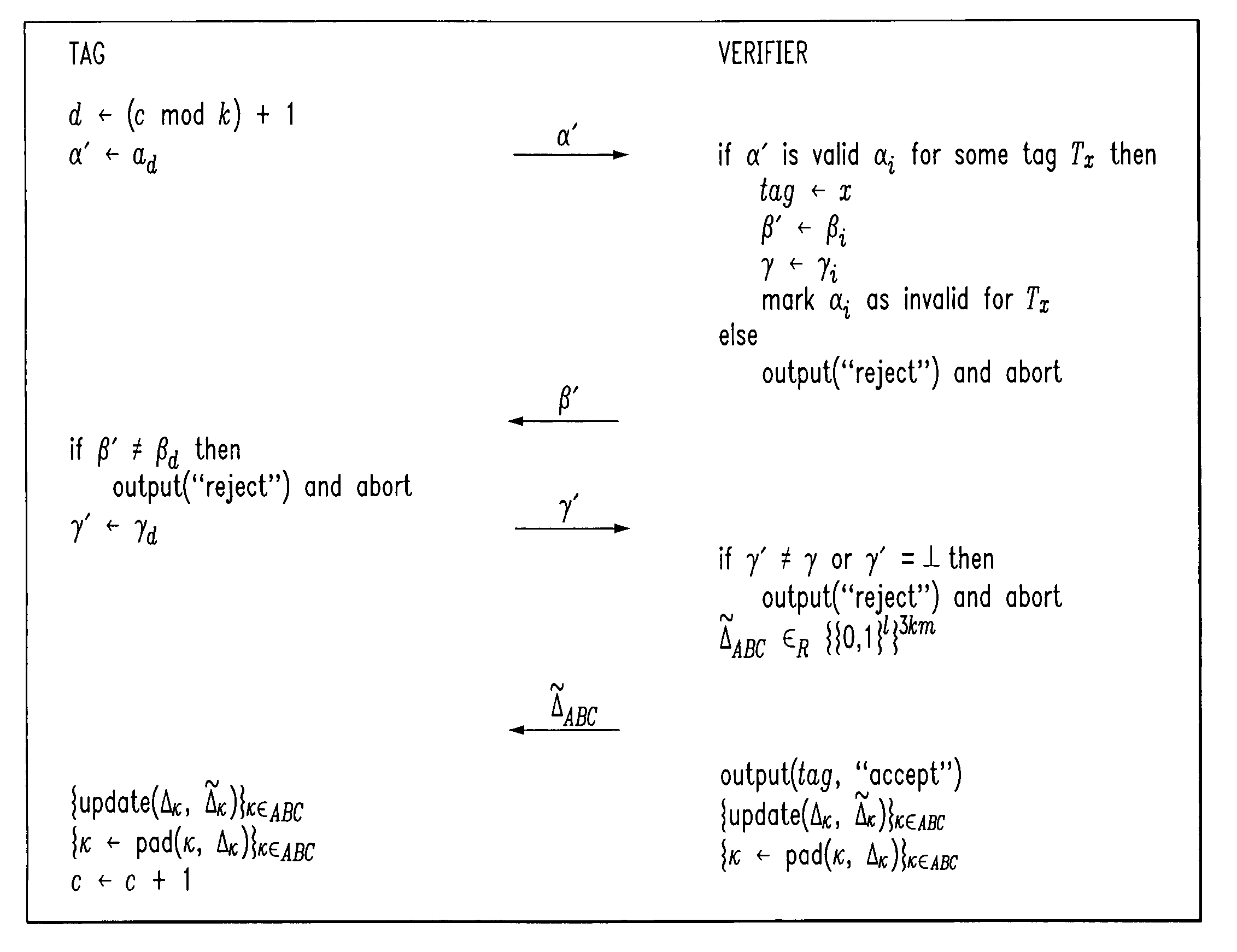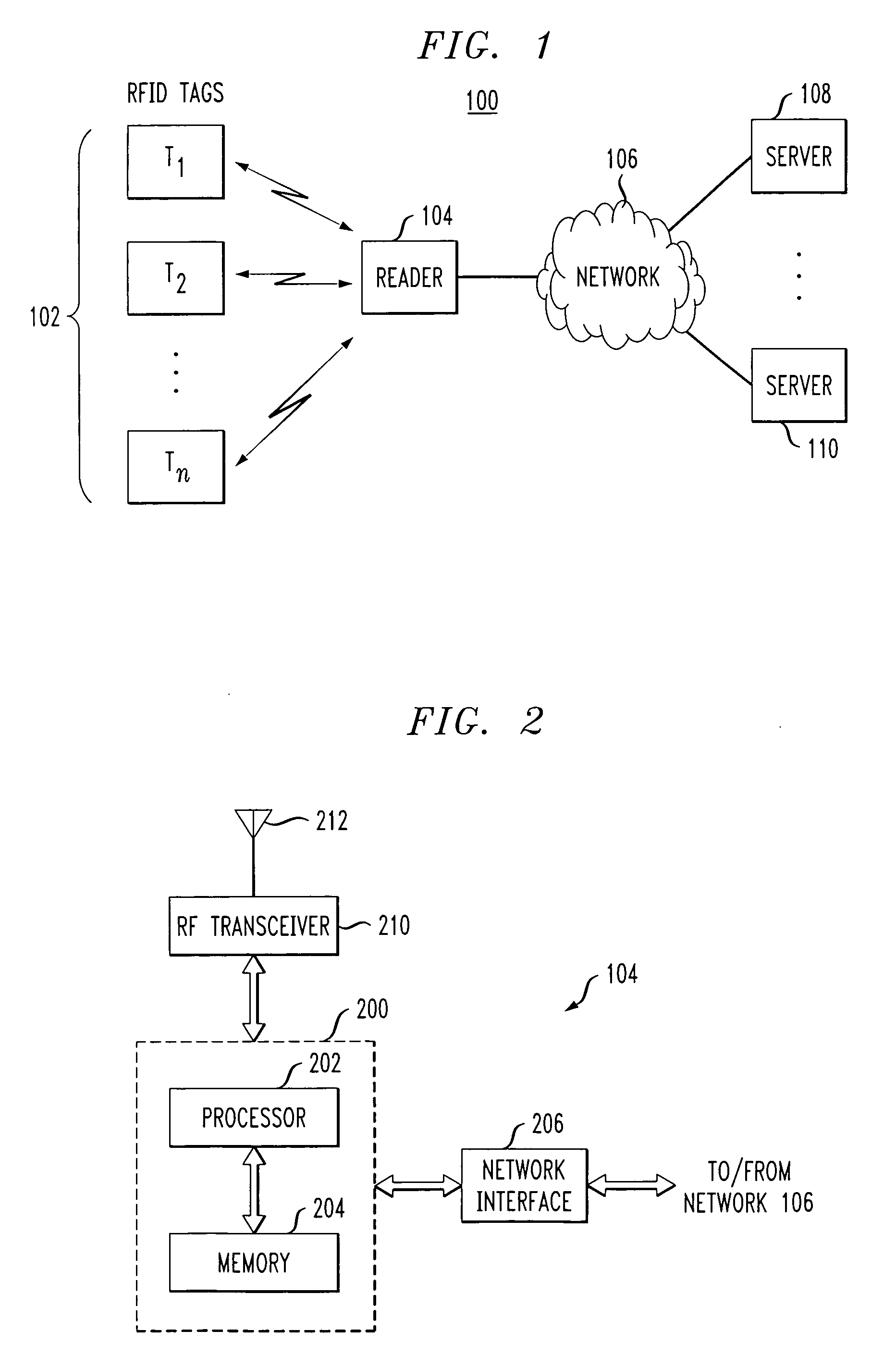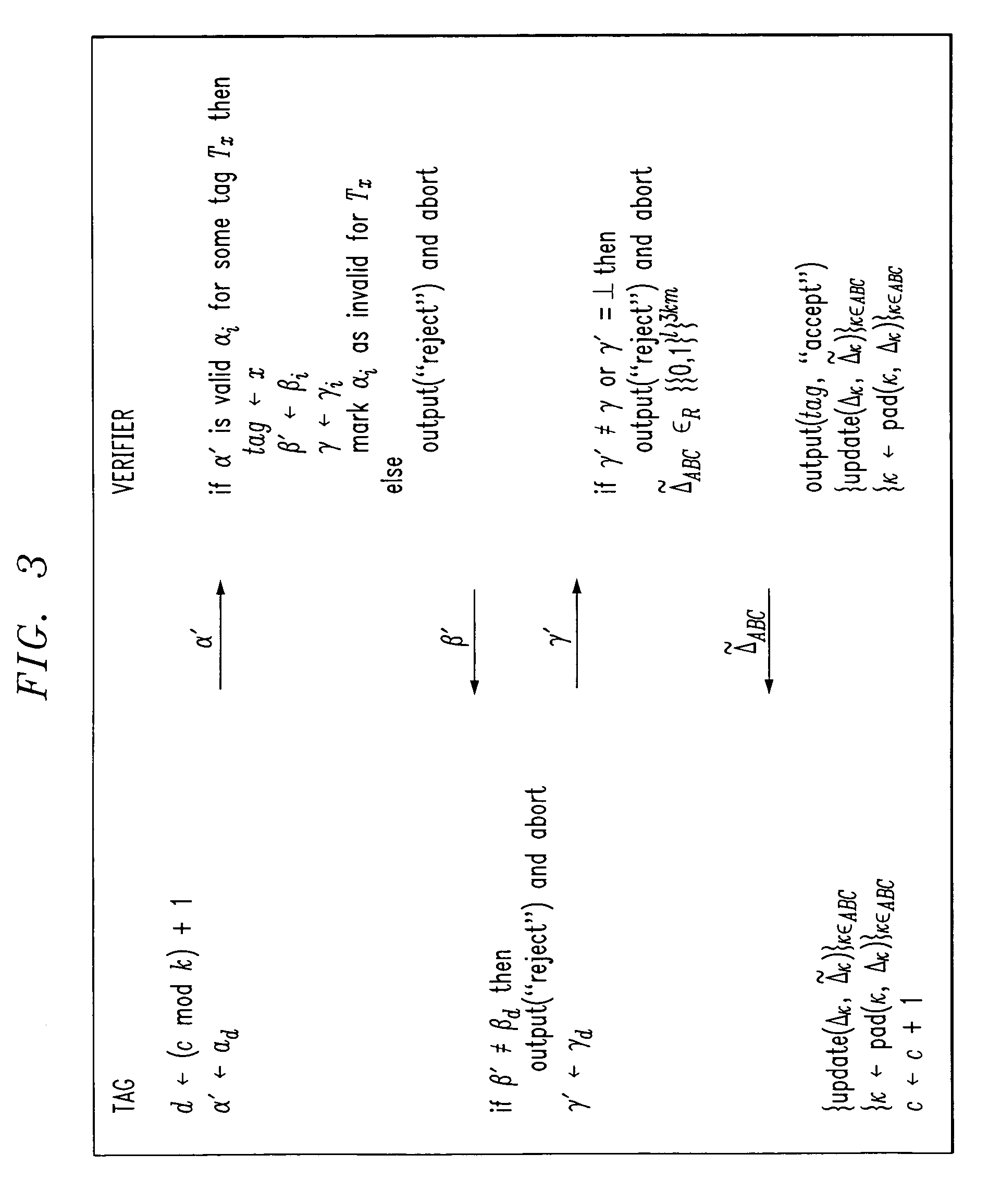Low-complexity cryptographic techniques for use with radio frequency identification devices
a radio frequency identification and low-complexity technology, applied in the field of low-complexity cryptographic techniques for use with radio frequency identification devices, can solve the problems of difficult authentication of tags, potentially widespread threat to consumer privacy, and techniques generally require substantial computational and storage resources, and achieve the effect of ready authentication
- Summary
- Abstract
- Description
- Claims
- Application Information
AI Technical Summary
Benefits of technology
Problems solved by technology
Method used
Image
Examples
Embodiment Construction
[0025]The present invention will be described herein with reference to an exemplary RFID system in which multiple RFID devices communicate with an RFID device reader. It is to be appreciated, however, that the invention is not restricted to use in this or any other particular RFID system configuration. Moreover, the invention can be implemented in a wide variety of non-RFID systems, each of which may comprise at least one device and at least one reader which communicates with the device. The latter systems may include systems which utilize forms of device-reader coupling other than wireless communication between the device and reader, including wired arrangements involving temporary or permanent physical coupling between the device and reader.
[0026]The term “RFID device” as used herein is intended to include an RFID tag or any other type of device configurable for transmission of device-identifying information via radio frequency communications. Although the following description wi...
PUM
 Login to View More
Login to View More Abstract
Description
Claims
Application Information
 Login to View More
Login to View More - R&D
- Intellectual Property
- Life Sciences
- Materials
- Tech Scout
- Unparalleled Data Quality
- Higher Quality Content
- 60% Fewer Hallucinations
Browse by: Latest US Patents, China's latest patents, Technical Efficacy Thesaurus, Application Domain, Technology Topic, Popular Technical Reports.
© 2025 PatSnap. All rights reserved.Legal|Privacy policy|Modern Slavery Act Transparency Statement|Sitemap|About US| Contact US: help@patsnap.com



